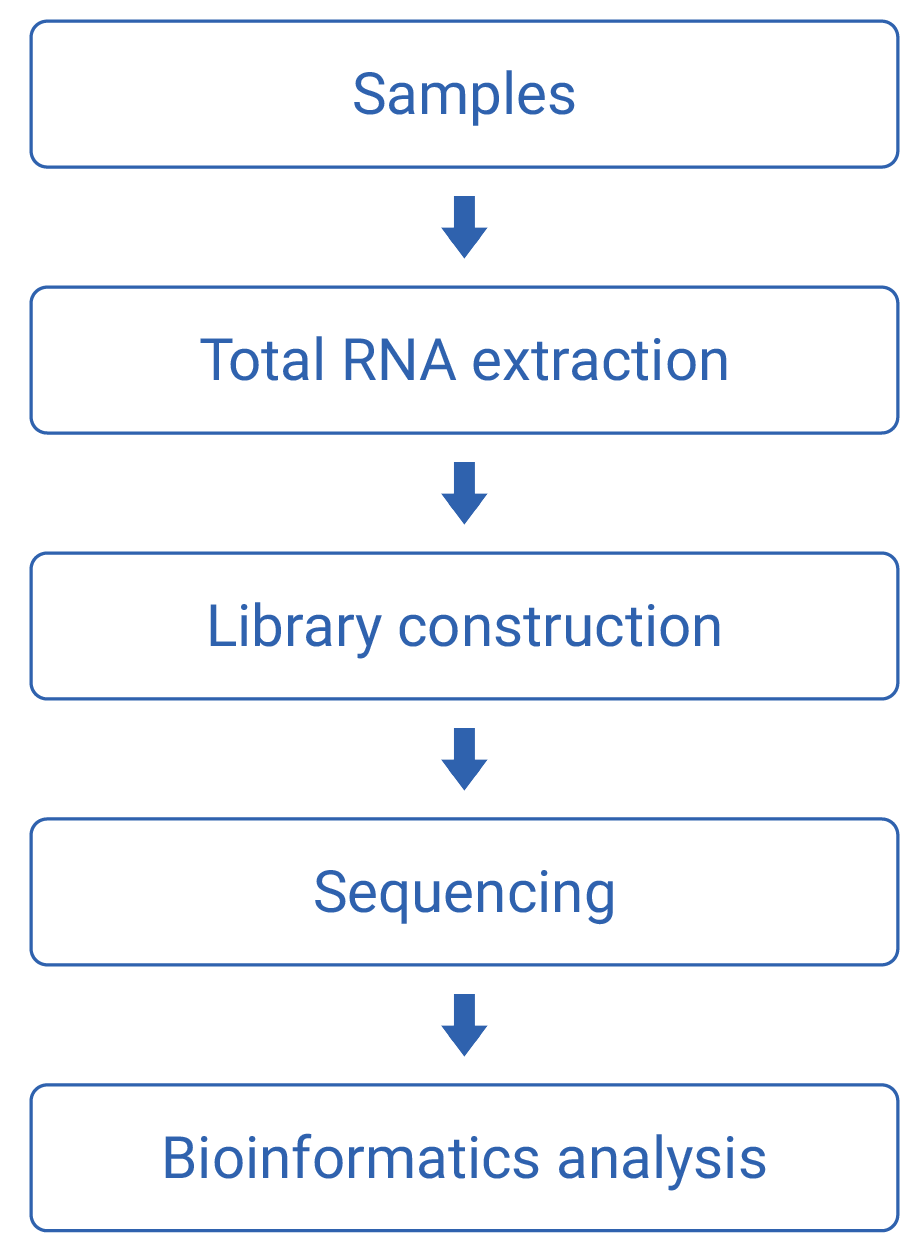
- Home
- About Us
- Service
- Application
- Technology
- Resource
- Contact Us

miRNA Sequencing(Plant)
MicroRNA (miRNA) sequencing employs next-generation sequencing (NGS) to identify and quantify miRNAs, crucial regulators of gene expression. This technique supports diverse applications including cancer research, developmental biology, diagnostics, and therapeutic targeting, offering insights into disease mechanisms and potential treatments.
Work flow

Technical Parameters
| Sequencing range | miRNA |
| Sequencing strategy | NGS PE150 |
| Sequencing throughput | 3Gb (10M reads) |
| Data quality | Fastq files, Q30≥85% |
| Data analysis | Standard analysis |
| TAT | Standard: 35 WD |
Applications
| Cancer Diagnosis and Prognosis | Therapeutic Target Identification | iral Infection Studies |
| Biomarker Discovery | Developmental Biology | Environmental Impact Research |
Bioinformatics Analysis
1.Data filtering
2.Genome mapping
3.Identification of non-coding RNA
4.Novel miRNA prediction and homology analysis
5.Novel siRNA prediction
6.Expression of non coding RNAs
- Expression of miRNA
- Expression of tRNA
- Expression of siRNA
- Expression of snoRNA
7.Difference analysis of snc-RNAs
- Differentially expressed miRNA
- Differentially expressed tRNA
- Differentially expressed siRNA
- Differentially expressed snoRNA
8.Time Clustering analysis
- TimeClustering of miRNA
- TimeClustering of siRNA
- TimeClustering of snoRNA
9.Cluster analysis of snc-RNAs
- Cluster analysis of miRNA
- Cluster analysis of siRNANA targets
10.Venn analysis of snc-RNAs
- Venn plot of miRNA
- Venn plot of tRNA
- Venn plot of siRNA
- Venn plot of snoRNA
11.Target prediction
- Target prediction of miRNA
12.Gene Ontology Enrichment Analysis
- GO enrichment of miRNA targets
13.Pathway Enrichment Analysis
- Pathway Enrichment Analysis of miRNA targets
Advantages
![]() High Sensitivity
High Sensitivity
![]() Comprehensive Coverage
Comprehensive Coverage
![]() Bias-Free Analysis
Bias-Free Analysis
